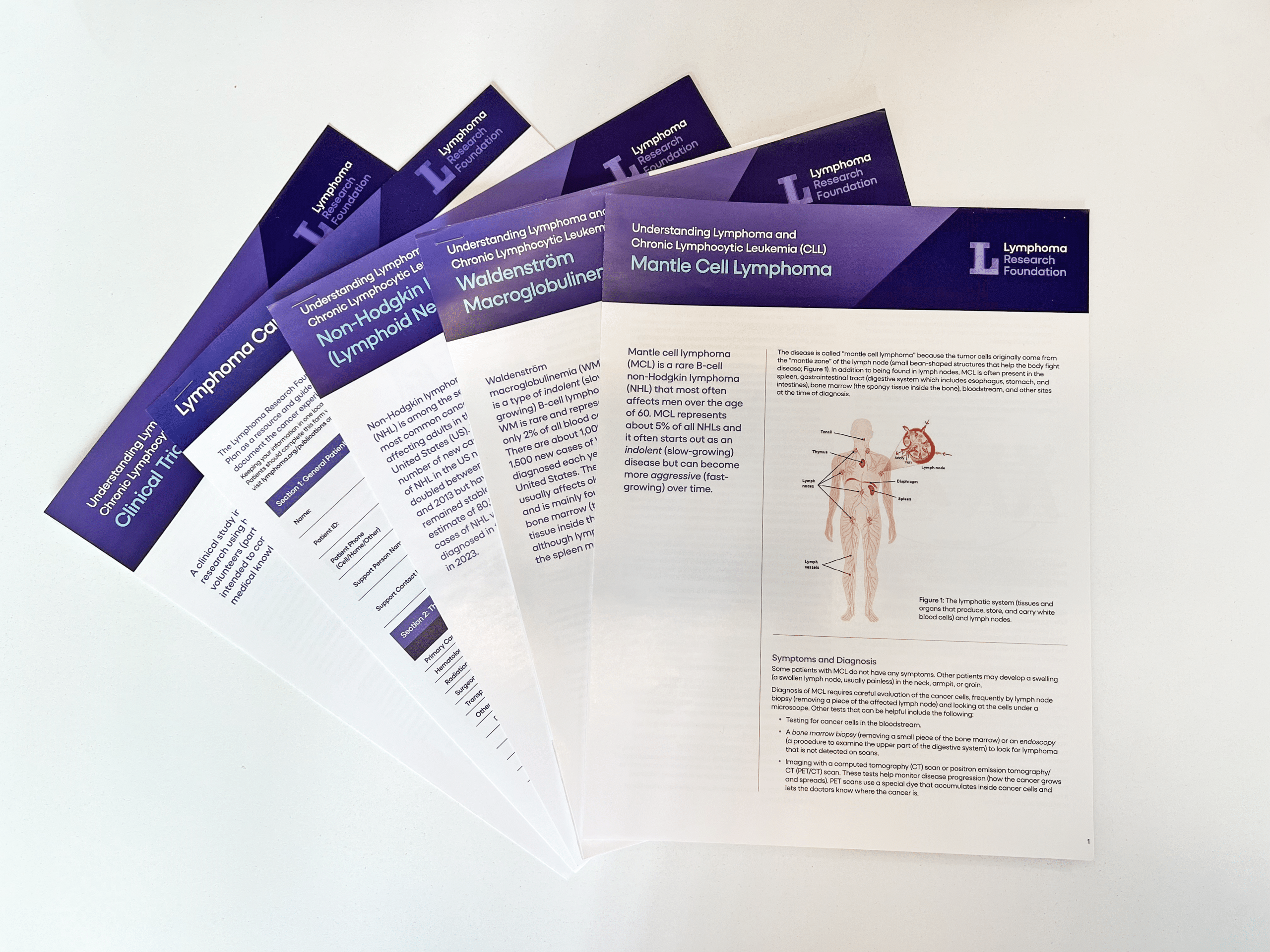About Lymphoma and Lymphoma Subtypes
Lymphoma is the most common type of blood cancer. Specifically, lymphoma is a cancer that affects lymphocytes, which are a type of white blood cell. Lymphocytes travel through the blood and lymphatic system to defend the body against foreign invaders like bacteria and viruses. Lymphomas usually develop when a change, or mutation, occurs within a lymphocyte, causing the abnormal cell to replicate faster than, or live longer than, a normal lymphocyte. Like normal lymphocytes, cancerous lymphocytes can travel through the blood and lymphatic system and spread and grow in many parts of the body, including the lymph nodes, spleen, bone marrow, and other organs.
Receive individualized support and information. Call the Lymphoma Research Foundation Helpline:
800-500-9976
helpline@lymphoma.org
The three major categories of lymphoma include:
Chronic Lymphocytic Leukemia/Small Lymphocytic Lymphoma (CLL/SLL): CLL/SLL are the same disease (and a type of lymphoma) with slightly different manifestations. Where the cancerous cells gather determines whether it is called CLL or SLL. Leukemic cells develop because of a change that takes place in the cell’s DNA. Approximately 19,000 people are diagnosed with CLL/SLL in the United States each year.
Hodgkin Lymphoma (HL): There are five types of HL, a form of lymphoma that involves the Reed-Sternberg cells. Approximately 9,000 people are diagnosed with HL in the United States each year.
Non-Hodgkin Lymphoma (NHL): There are more than 90 types of NHL, some of which are more common than others. Any lymphoma that is not CLL/SLL or that does not involve Reed-Sternberg cells is classified as a non-Hodgkin lymphoma. Approximately 81,560 people are diagnosed with NHL each year in the United States.
To learn more about a specific type of lymphoma, select from the following menu:
Signs and Symptoms
Certain symptoms are not specific to lymphoma and are, in fact, similar to those of many other illnesses. People often first go to the doctor because they think they have a cold, the flu, or some other infection that does not go away.
Common symptoms include:
- Swelling of lymph nodes, which may or may not be painless
- Fever
- Unexplained weight loss
- Sweating (often at night)
- Chills
- Lack of energy
- Itching
Most people who have these non-specific symptoms will not have lymphoma. However, it is important that anyone with persistent symptoms be examined by a doctor to make sure lymphoma is not present.

Coping with Lymphoma
Each person’s experience with cancer is different, and coping with the impact of having lymphoma is unique to each patient.

Treatment Options
Blood cancers, including lymphoma, are extremely heterogeneous and can involve a variety of treatment options, often in combination.
Need to talk to someone?
800-500-9976 | helpline@lymphoma.org
For answers to lymphoma-related questions and resources, contact our Helpline.

We team up with experts to host educational programs that provide clear, easy-to-use information to help you or your loved one navigate every step of your journey.

We offer a wide range of free disease and treatment-specific publications for people with lymphoma, their loved ones, and healthcare professionals.

We offer one-to-one peer support through the Lymphoma Support Network (LSN). LSN connects patients and care partners with volunteers who have had similar experiences for support.
